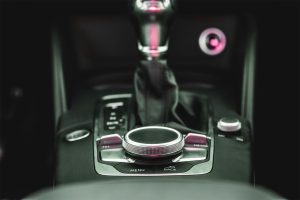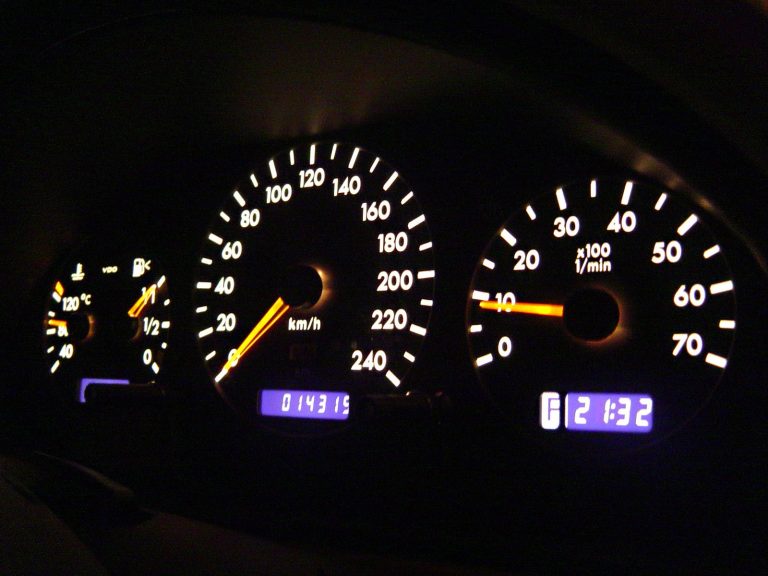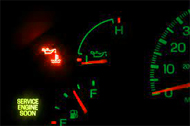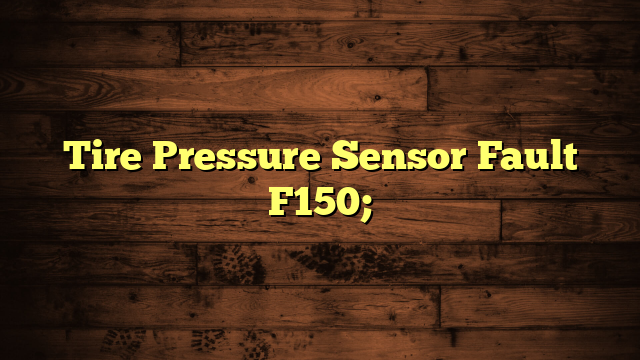“Sensor Saga: Tackling the Fallas Dell Sensor Map Head-On!” – 2023
Introduction
Definition of MAP Sensor
A MAP sensor, or Manifold Absolute Pressure sensor, is a vital issue in contemporary car structures, gambling a pivotal role in optimizing engine overall performance and fuel performance. It continuously monitors the air stress inside the consumption manifold, imparting the Engine Control Unit (ECU) with vital facts to alter gasoline injection, ignition timing, and different important engine parameters.

Importance in Automotive Systems – Fallas Dell Sensor Map
The MAP sensor serves as an essential link among the engine’s intake machine and the ECU, enabling the engine to adapt to various air pressures and keep premiere operation underneath various using conditions. Accurate MAP sensor readings make sure that the gas-air mixture is exactly controlled, main to smoother energy delivery, advanced gas economic system, and decreased emissions.
Overview of Common Issues
Despite its significance, the Fallas Dell Sensor Map is at risk of malfunctions that could adversely affect engine overall performance. Common troubles consist of:
- Clogged or contaminated sensor: Dirt, particles, or excessive moisture can intrude with the sensor’s ability to appropriately measure air stress.
- Damaged sensor diaphragm: A torn or broken diaphragm can lead to erroneous pressure readings.
- Electrical malfunctions: Wiring issues or faulty connections can disrupt the sensor’s communique with the ECU.
Understanding Fallas Dell Sensor Map Functionality
Role in Engine Performance
The MAP sensor performs a crucial function in keeping most excellent engine performance by using supplying the ECU with real-time data approximately the air stress in the intake manifold. This facts is crucial for determining the correct fuel injection quantity and ignition timing.

Pressure Sensing Mechanism
The MAP sensor generally employs a piezoresistive or MEMS (microelectromechanical) pressure sensing element. As the air pressure increases, the sensor element experiences an exchange in resistance or capacitance, which is transformed into an electrical sign. This signal is then transmitted to the ECU for interpretation.
Integration with Engine Control Unit (ECU)
The MAP sensor is at once related to the ECU, permitting it to communicate the measured air pressure values. The ECU utilizes this statistics, along with enter from other sensors, to calculate the engine’s load and alter numerous engine parameters accordingly.
Pitfalls in MAP Sensor Functionality
While the MAP sensor is a highly sturdy aspect, it isn’t proof against malfunctions that could avert engine performance. Some not unusual pitfalls encompass:
- Sensor calibration issues: Improper calibration can result in faulty pressure readings and have an effect on the ECU’s capacity to optimize engine performance.
- Vacuum leaks: Leaks inside the intake device can create erroneous pressure readings, causing the ECU to miscalculate fuel injection and ignition timing.
- Electrical interference: Electromagnetic interference from different additives can disrupt the sensor’s electrical sign, main to faulty readings.
Troubleshooting MAP Sensor Issues
Diagnosing MAP sensor-associated troubles involves a systematic approach that considers various factors:
- Symptom assessment: Observe engine conduct for symptoms which includes difficult idling, hesitation, or lack of electricity.
- Visual inspection: Check the MAP sensor and its connections for symptoms of damage or contamination.
- Data evaluation: Review ECU information logs to perceive capacity sensor malfunctions.
- Diagnostic equipment: Utilize specialized diagnostic gear to test the sensor’s capability and pinpoint specific problems.
Preventive Measures
To reduce the chance of Fallas Dell Sensor Map-associated troubles, it is vital to implement preventive measures:
- Regular upkeep: Follow recommended preservation schedules to make certain right engine air filter out cleanliness and intake gadget integrity.
- Sensor inspection: Periodically inspect the MAP sensor for signs of damage or contamination.
- Protective measures: Shield the MAP sensor from immoderate warmness, moisture, and electrical interference.
Unveiling the Fallas Dell Sensor Map
Inconsistencies in Pressure Readings
Accurate MAP sensor readings are paramount for finest engine overall performance and fuel efficiency. However, inconsistencies in strain readings could have adverse outcomes for the engine’s operation.
Impact on Air-Fuel Mixture
The air-gas mixture, the ratio of air to gas inside the combustion chamber, is a crucial factor in engine efficiency. Inaccurate MAP sensor readings can lead to an improperly balanced air-gasoline mixture, resulting in:
- Excessively wealthy combination: Too a good deal gasoline and inadequate air can cause incomplete combustion, leading to multiplied gas intake, bad energy output, and multiplied emissions.
- Excessively lean aggregate: An overabundance of air and insufficient gasoline can lead to overheating, knocking, and capacity engine harm.Engine Performance Fluctuations
Inconsistent MAP sensor readings can motive erratic engine conduct, together with:
- Rough idling: An volatile air-gas mixture can lead to uneven combustion, resulting in rough idle and stalling.
- Hesitation and strength loss: Erroneous pressure readings can disrupt the ECU’s potential to optimize gasoline injection and ignition timing, causing hesitation and electricity loss throughout acceleration.
- Erratic engine velocity: Inconsistent MAP sensor indicators can intervene with the ECU’s manage of the idle pace, main to fluctuations in engine RPM.
Wiring Woes
The MAP sensor is based on electrical connections to transmit strain readings to the ECU. Faulty wiring can disrupt this communication, main to sensor malfunctions.
Corrosion Concerns
Exposure to moisture and cruel environmental situations can lead to corrosion of the MAP sensor’s electric connectors. Corrosion can disrupt the flow of electrical signals, inflicting intermittent sensor operation or entire failure.
Electrical Connectivity Challenges
Damaged or free wiring can also intervene with the MAP sensor’s communique with the ECU. Damaged wires can purpose sign interruptions or complete lack of connection, whilst free wires can result in intermittent or erratic sensor readings.
Environmental Influences – Fallas Dell Sensor Map
The MAP sensor is touchy to environmental factors such as temperature and moisture, that could affect its accuracy and reliability.
Temperature Sensitivity
The MAP sensor’s stress sensing detail is touchy to temperature adjustments. Extreme temperatures, both hot and cold, can cause the sensor to expand or contract, altering its stress readings.
Moisture-associated Malfunctions
Excessive moisture can penetrate the MAP sensor and motive damage to its internal additives, main to faulty pressure readings or complete sensor failure. Moisture can also promote corrosion of electrical connections, further exacerbating sensor malfunctions.
Diagnostic Dilemmas
Identifying MAP Sensor Failures
Diagnosing MAP sensor disasters can be difficult because of the diffused nature in their signs and symptoms and the capability for overlap with different engine issues. A systematic technique is vital to pinpoint the source of the difficulty.
On-board Diagnostics (OBD) Codes
Modern motors prepared with OBD II systems might also shop diagnostic trouble codes (DTCs) related to MAP sensor malfunctions. These codes can offer valuable clues approximately the nature of the problem. However, it is vital to note that OBD codes won’t always be definitive and may require further research.
Physical Inspection Techniques
Visual inspection of the MAP sensor and its connections can display signs and symptoms of harm or infection. Look for:
- Physical harm: Cracks, dents, or scratches at the sensor housing or electric connector.
- Contamination: Dirt, particles, or moisture buildup at the sensor or connectors.
- Corrosion: Green or white deposits on the electrical connectors, indicating corrosion.
Collaborative Issues with Other Sensors
The MAP sensor interacts with different engine sensors, and malfunctions in those sensors can mimic or exacerbate MAP sensor-related issues.
Interplay with Oxygen Sensors
Oxygen sensors, also referred to as O2 sensors, degree the oxygen content material inside the exhaust gases, presenting comments to the ECU for adjusting the air-gas aggregate. A malfunctioning oxygen sensor can ship faulty alerts, inflicting the ECU to get hold of incorrect data approximately the air-fuel aggregate, doubtlessly covering or tense MAP sensor issues.
Impact on Throttle Position Sensors
Throttle position sensors (TPS) display the position of the throttle pedal, providing the ECU with information about the driving force’s demand for energy. A defective TPS can send erroneous alerts, leading to miscalculations in gas injection and ignition timing, which could further complicate the diagnosis of MAP sensor problems.
To efficiently diagnose MAP sensor screw ups, it’s far important to don’t forget the capability interactions with other sensors and hire a complete diagnostic technique that consists of each code-based totally and physical inspection strategies.
Navigating Repair and Replacement – Fallas Dell Sensor Map
DIY Troubleshooting Tips
For automatically inclined people, a few simple troubleshooting steps may be finished to address MAP sensor problems:
Cleaning and Maintenance
Gently cleaning the MAP sensor and its connections with the best cleansing answer can cast off collected dirt or debris that may be interfering with its operation.
Addressing Wiring Concerns
Inspect the MAP sensor wiring for symptoms of harm or corrosion. If unfastened connections are detected, carefully tighten them. If broken wires are located, they ought to be replaced.
It is critical to word that those DIY troubleshooting steps won’t solve all MAP sensor-related issues. In a few cases, more superior diagnostic gear and understanding may be required to pinpoint the basis reason of the issue.
Seeking Professional Assistance
When confronted with complicated MAP sensor issues or a lack of mechanical know-how, in search of professional assistance from a certified automotive technician is usually recommended.
Importance of Certified Technicians
Certified technicians possess the understanding, revel in, and specialized tools to appropriately diagnose MAP sensor malfunctions and carry out the necessary repairs or replacements.
Cost Considerations in Replacement
The fee of MAP sensor substitute can range relying on the car make, version, and the unique sensor version. It is really helpful to obtain fees from reliable repair stores earlier than intending with the replacement.
In popular, MAP sensor replacement is a tremendously truthful technique for knowledgeable technicians. However, it’s miles vital to source the substitute sensor from a reputable provider to make certain compatibility and satisfactory.
FAQ
What are the signs and symptoms of a bad MAP sensor?
The signs of an awful MAP sensor can range relying on the severity of the problem. However, some not unusual signs and symptoms include:
- Rough idling: The engine may additionally idle unevenly or stall.
- Hesitation or lack of energy: The engine can also hesitate or lack strength while accelerating.
- Reduced gas economic system: The engine may additionally consume more gas than common.
- Check engine light: The check engine mild may additionally remove darkness from on the dashboard.
How can I check my MAP sensor?
There are a few ways to check your MAP sensor. One manner is to use a multimeter to measure the voltage output of the sensor. Another way is to use a vacuum gauge to measure the vacuum inside the consumption manifold. You also can use a scan tool to read the MAP sensor data from the ECU.
How a great deal does it price to replace a MAP sensor?
The cost of changing a MAP sensor can range depending on the vehicle make, model, and the specific sensor model. However, it is normally between $50 and $one hundred fifty.
Can I replace my MAP sensor myself?
Replacing a MAP sensor is a fantastically trustworthy technique for skilled mechanics. However, in case you aren’t comfortable working to your personal car, it is first-rate to take it to a expert.
How can I prevent my MAP sensor from failing?
There are some matters you can do to prevent your MAP sensor from failing:
- Regularly easy your air filter out: A grimy air filter can clog the MAP sensor and motive it to malfunction.
- Avoid overfilling your engine with oil: Overfilling your engine with oil can cause oil to leak into the intake manifold and damage the MAP sensor.
- Don’t pressure your vehicle in harsh situations: Extreme temperatures or moisture can damage the MAP sensor.
Conclusion – Fallas Dell Sensor Map
The MAP sensor plays a vital function in optimizing engine overall performance and gas performance. Understanding its functionality and ability pitfalls is vital for diagnosing and stopping troubles that can compromise engine operation. By implementing preventive measures and directly addressing any sensor-related issues, motorists can ensure premiere engine overall performance and keep the smooth, efficient operation in their vehicles.






